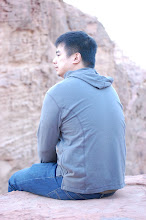So this is my new project, a place for everyone to find information about Capoeira, or at least all the information that I have. So lets start with music:
Here are the names of the toques, what they sound like on a berimbau (x=buzz; D=open note; d=closed note; 0=rest), and how they are played:
Angola: x-x D d o| x-x D d o| x-x D d o
A generally slower game. Its all about "Brincandeira" or playfulness. This is the tricksters game. It ALWAYS starts with a "Ladainha", a longer song sang by the leader of the roda (usually the person holding the gunga). The movements of Angola are different from that of Capoeira Regional.
Jogo de Dentro: x-x d D d| x-x d D d| x-x d D d
Jogo de Dentro literally means the "inside game". It is played very close in a very small roda and is meant to be very cooperative. The objective is to stay close and have a conversation with your partner, while trying to make each other look good. Rarely ginga, a lot of ground movements and acrobatics.
Bengula: x-x D d d| x-x D d d| x-x D d d
This game is generally slow and on the ground. Not a lot of kicking, but is about setting your partner up for a takedown or tricking them. Controlled takedowns are allowed, but straight kicks (martelos, chapas, bencao, etc.) are discouraged. Acrobatics is important, you want to be aggressive in this game, but also play beautifully.
Sao Bento Grande de Angola: x-x d D D| x-x d D D| x-x d D D
This game was described by Mestre Aceodeon as the "anything goes" game. Its a free flowing game, that is usually faster and both movements from Capoeira Angola and Capoeira Regional can be used. All kicks and takedowns are ok.
Sao Bento Grande de Regional: D x d x-x D D d| D x d x-x D D d
The game of Mestre Bimba. It is a very fast game, traditionally played with 1 berimbau and 2 pandeiros. This is a standing game of exchanging kicks. This game starts with a "quadra" and ends like a ladainha.

No comments:
Post a Comment